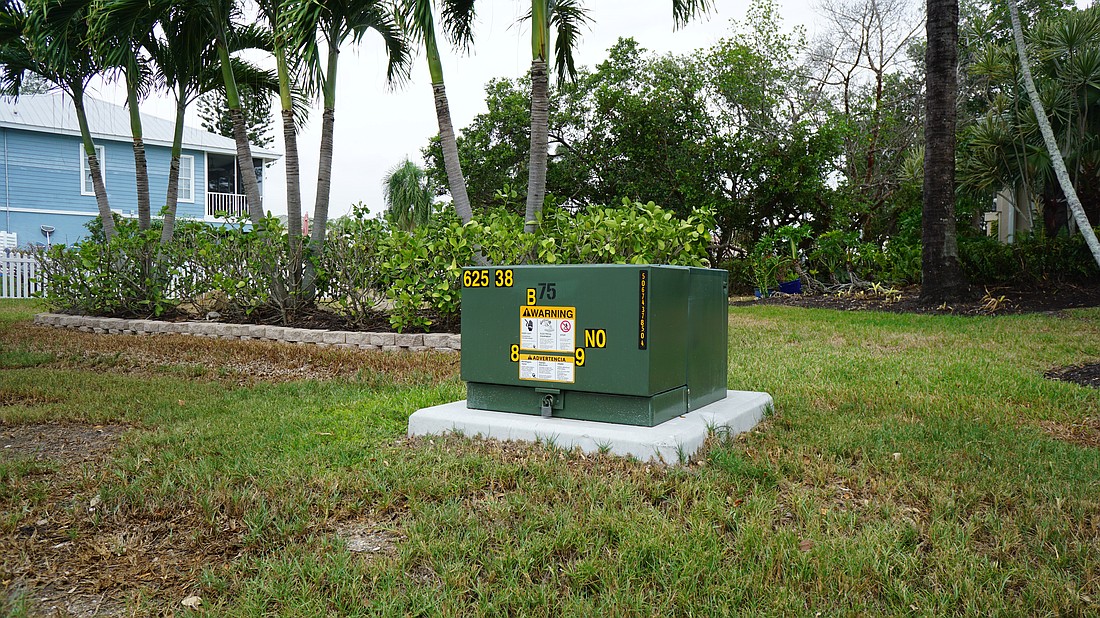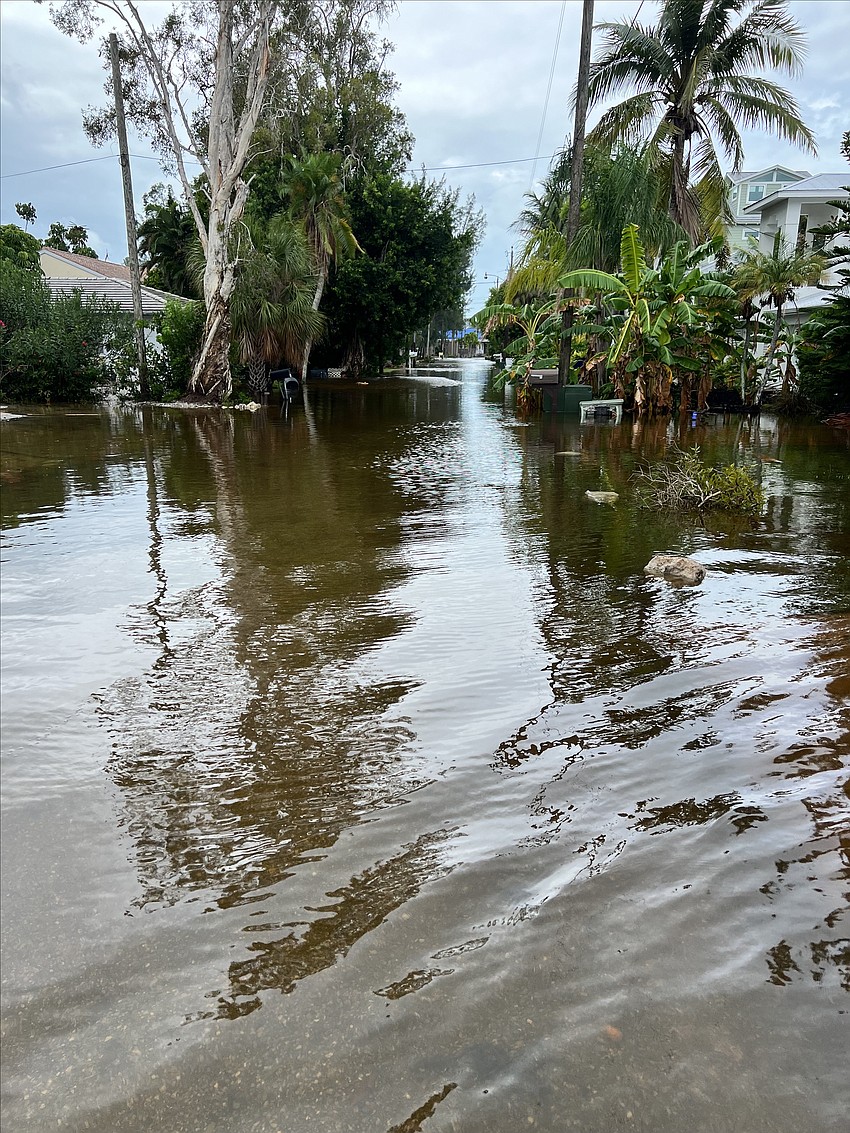- October 23, 2024
-
-
Loading

Loading

The underground transformers installed on Longboat Key aren’t designed to be underwater.
When the combination of a king tide and Hurricane Idalia’s storm surge flooded low-lying areas of Longboat Key, 20 underground transformers failed.
This left around 400 Longboat Key Florida Power & Light customers without power, which the company restored within 15 hours, according to FPL representatives.
Public Works Director Isaac Brownman, along with a team of FPL representatives, discussed the issue with the Town Commission at the Sept. 26 regular workshop.
But first Brownman presented some good news. The project remains under budget by about $3.7 million, and 99% of easements have been completed.
Highway lights for Gulf of Mexico Drive have been delivered and installed, and the town is able to use remaining funds to purchase backlit street signs for the entirety of GMD.
But the challenges that remain are estimating a final timeline for completing the undergrounding project and investigating what went wrong during the flooding from Idalia.
According to FPL, the company has begun a thorough forensic investigation that will examine the failed transformers and try to identify what exactly went wrong.
But Robert Gaddis, director of FPL’s Storm Secure Underground Program, said the transformers were never meant to be fully submerged.
He said he doesn’t think there will ever be a type of underground transformer system that could be 100% submerged and remain energized.
“This system is the best we can put in, but it’s not perfect, and there’s going to be failures,” Gaddis said.

Gaddis hypothesized that saltwater interacting with certain metals within the transformer may have been the cause. But there’s no way to tell for certain until the investigation concludes in 60-90 days.
While FPL has a lot of experience with overhead utilities, Gaddis said undergrounding is a relatively new concept for FPL. There’s a lot of learning along the way.
Town commissioners fired away their questions, specifically wondering why the area’s historical flooding wasn’t considered in the initial design.
“If you’d have asked us we would’ve told you that they flood,” Vice Mayor Mike Haycock said. “I mean those streets have been flooding for 30 years.”
District 4 Commissioner Debra Williams wondered whether base flood elevation maps were used as a starting point in the design.
Gaddis said looking at FEMA base flood maps is something that was implemented after Hurricane Ian in 2022.
Longboat Key’s underground utility referendum was passed back in 2016, and Gaddis said the project was engineered around four years ago.
“In terms of specifics around whether those maps were considered at the time, it wasn’t something we did as a process at the time,” Gaddis said.
Another question asked of FPL was how the 20 failed transformers were able to be replaced so quickly. The project is currently delayed due to lead times for remaining transformers in Phases 3 and 4, which won’t be installed until early 2024.
Program Manager for FPL Hau Tran said the two situations require two different types of transformers.
The ones that needed to be replaced after the flooding are simple, single-phase transformers for residential use. The transformers experiencing supply-chain delays are more complex and used for commercial properties.
Mayor Ken Schneier questioned what would happen if future flooding caused the same transformers to fail. The FPL representatives said backups would be kept on hand, and the company always tries to restore power as quickly as possible.
Overall, Gaddis assured the commissioners that despite some complications undergrounding was still the best option.
“Given that wind blowing debris and vegetation are the leading cause of outages, I’d say the underground system is the most reliable one you’re going to have,” Gaddis said.
There was also contention over the timeline for completing the project.
Gaddis said FPL’s goal is to harden the entire state’s utility infrastructure by undergrounding. Schneier worried that Longboat Key isn’t a hopeful start.
“How is it possible that we’re going to harden the whole state when we can’t get a 10-mile island done?” Schneier said.
Brownman said that the original completion date for the project was December 2022, but that maybe that was too ambitious.
The project began under the leadership of former Town Manager Dave Bullock. Brownman said at that time the estimate was for the project to take five to seven years, but they would shoot for three-and-a-half years.
“Sometimes things happen,” Brownman said. “We’re still pushing very hard. We are beyond the three-and-a-half-year window that we initially committed to, but we’re going to push and make every effort to get this done.”
FPL External Affairs Manager Devaney Iglesias said while FPL initially agreed to work alongside the other contractors to get the project done in the timeframe, FPL never guaranteed the three-and-a-half year timeline.
Phase 2 is nearly complete, but Brownman said it is the most complicated phase. The team estimates completion by the end of the year.
The other snag in the project is the need to replace existing underground transformers in phases 3 and 4. Initially, the construction team thought those could be used, but upon opening them up earlier this year, Wilco Electrical realized the transformers were too outdated.
Tran admitted that this was an oversight on FPL’s part.
The project awaits the remaining 24 transformers to complete phases 3 and 4. All of those are estimated to arrive and be installed in early 2024.
Correction: This article has been updated to correct the spelling of Devaney Iglesias.